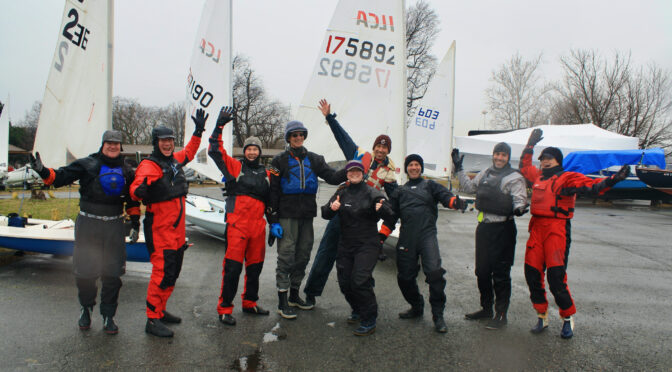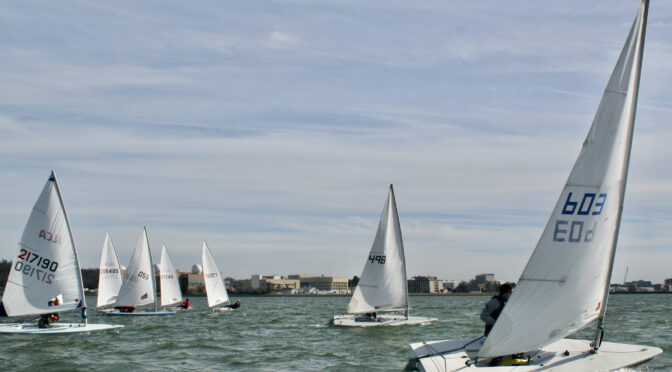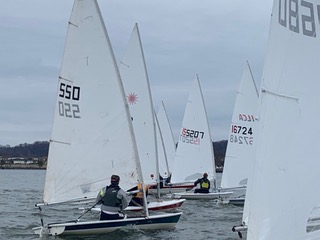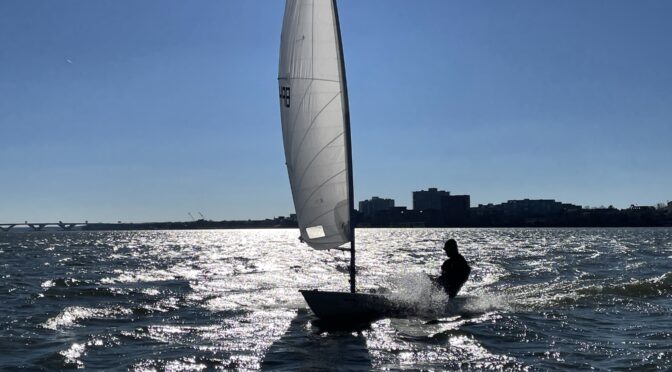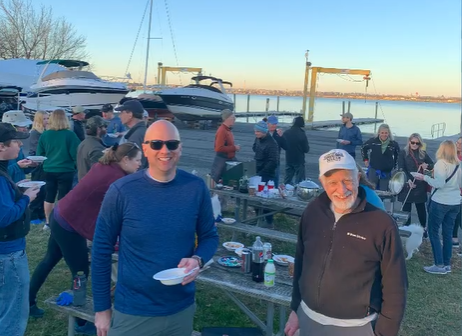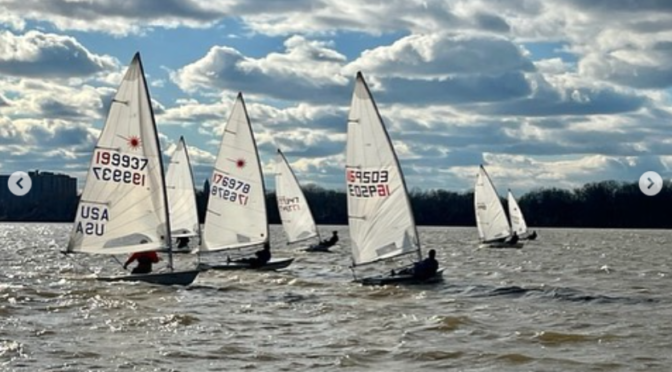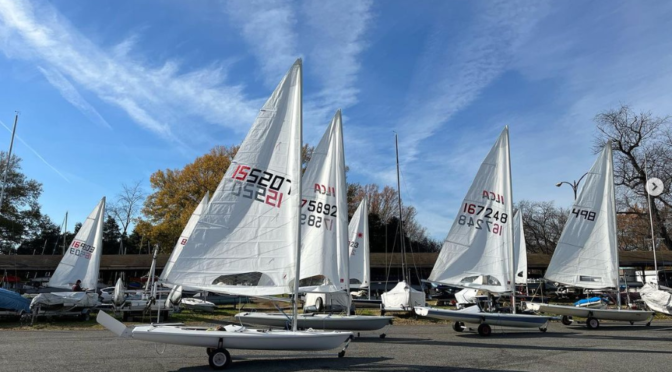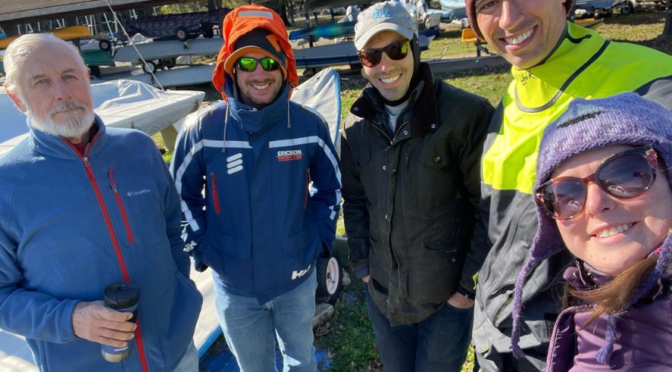Yes my first time ever writing the Third Place write up hopefully not my last!The day was Cold, Windy, and Raining the whole day with sustained winds NNE starting 10-15 gusting up to 25+ especially at the end of the day.My goal for the day was to have clean starts and clear air both a challenge. Especially being slow off the line and becoming the marshmallow for the better sailors sailing over me. So after the starts was always looking to tack to port for clear air…Thanks for tips from other better sailors was able to keep bow down and did not pinch as I have done in the past. Also still learning the controls and shape of the newer MKII sail and starting to dial it in by not keeping the out haul tight in heavy air but 3-4” out.As the races went on the waves got bigger and more challenges sailing in waves up wind. Need to do more S patterns rather then sailing into the waves slowing down the boat.Downwind was fun trying to catch waves but having a lead from third to eighth after the death roll I promised to LJ.The last race I had a great start with a nice lift on the left and saw other sailors getting tired and went all out to pull in a second. Great day of sailing!Thanks to RC for setting up Olympics and giving tips after the races. Also thanks to the other sailors who helped me with their spares so I could get on the water. (Note to self buy extra vang keys and drain plugs.)Great to see the Team efforts to get everyone in safely to the Docks. Sailflow at this time was gusting to 32. Excited to sail with all you frostbiters. See you next weekend.Kevin ie Pingu. #4508 Go B Fleet.
See photos curtesy of Steen on RC!

